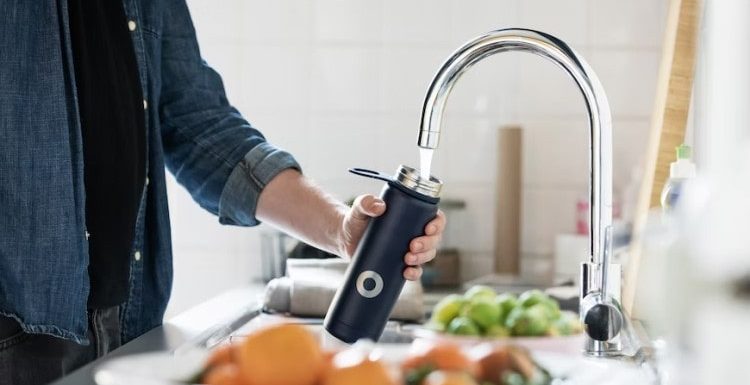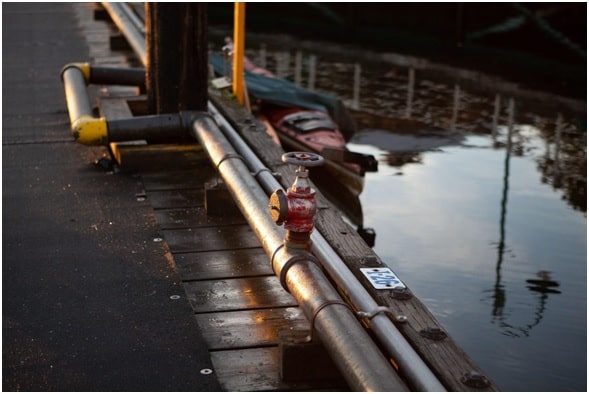
On the surface, the answer is yes, tap water in the U.S. is safe to drink.
Public water systems supply our homes with water that has been treated according to the Environmental Protection Agency (EPA), but when you factor in circumstances like local pollution, broken water lines, and municipalities’ failure to follow EPA regulations — how safe is safe?
It’s no wonder this question brings up endless debate. On one hand, the U.S. is touted to have one of the safest water systems in the world, but on the other, there have been situations like the Flint water crisis.
So, should you swap out drinking from the tap for other options? Here’s what you need to know to make an informed decision.
What’s in Your Tap Water?
To start with the basics, it’s worth mentioning that even though it may look and taste clean, what runs from your taps is never 100% water. It contains both naturally occurring and added substances such as:
● Chlorine and Chloramine
Most public water systems in the U.S. use chlorine and chloramine to disinfect the water. These chemicals are the most common water disinfectants because they are effective against germs and safe for consumption at regulated levels. Chlorine, for example, has been used since 1908 without any major cases of harmful health effects in humans.
● Fluoride
Another chemical added to your water supply, fluoride has been proven to keep teeth strong and reduces cavities in children and adults. Most U.S. tap water contains the EPA-recommended levels of 0.7 mg per liter. This intervention was put in place to promote dental health among citizens.
● Minerals
Tap water contains minerals such as copper, calcium, magnesium, iron, potassium, zinc, and more. The variations and amounts in the water depend on the source and location. Underground water contains more minerals than surface sources because it absorbs them as it filters through the earth’s rocks and soils. Some minerals are also added to the water in some areas.
● Contaminants
Natural water contains microorganisms, metals, and chemicals — these are what public water suppliers seek to remove. However, trace amounts remain in our water and can cause serious diseases. This brings up our next point.
EPA Safety Regulations
Why does our water still contain contaminants if water companies treat it before supplying it to our homes?
Municipal water in the U.S. is treated to meet legal standards set by the EPA. But these standards do not stipulate that contaminants be fully removed from the water. Instead, they set Maximum Containment Levels (MCLs), i.e., limits on the level of contaminants that can be present in water before it is deemed a health risk.
The EPA has set MCLs on over 90 contaminants. For example, the limit for Nitrate, which makes its way into our water from crop fertilizers, is 10 parts per million.
Because thorough water treatment is expensive and time-consuming at a large scale, most water suppliers only seek to meet these limits. This means contaminants that aren’t regulated by the EPA remain in the water.
EPA Vs EWG
Even as water treatment companies do the bare minimum, it gets worse when you consider that some organizations think EPA water regulation is inadequate. The Environmental Working Group (EWG), for example, believes “EPA-standard” water may still be unsafe for drinking.
They have produced their own EWG water standards with more stringent limits. For instance, the EPA’s MCL for arsenic is 10 PPB, while the EWG’s standard is 0.004 PPB. They have also recommended limits on pollutants that the EPA does not regulate such as manganese and aluminum.
Neglect and Accidents
As the Flint Water Crisis brought to light, local governance greatly affects the quality of water coming out of your taps. Water suppliers in various parts of the country have been reported to disregard some of the EPA’s regulations in the past. In 2015 alone, there were more than 80,000 reported violations of the Safe Drinking Water Act by community water systems. These included breaches like exceeding health-based standards, failing to properly test water for contaminants, and failing to report contamination to state authorities or the public.
On the other hand, inadvertent pollution of the water can occur through broken pipes, chemicals leaching from old pipes, industrial chemicals entering water sources, and more. Your public water system is responsible for notifying you if the water quality does not meet EPA or state standards, or if there is a waterborne disease emergency.
Acute contamination levels are communicated via local media within 24 hours, while less severe cases are reported through an annual Consumer Confidence Report.

Is Private Well Water Safe?
The above regulations do not apply to your supplier if you live in an area where your water comes from a private well. Though private water is also drawn from underground sources, the water is usually transported to your home without undergoing EPA-recommended treatment. Sometimes the water is transported to your home as is.
The lack of legal enforcement also means your supplier may not be held accountable if something goes wrong. It falls onto you to guarantee your safety.
The benefit of a private water supply is that you have more control over what goes into your water. However, it is often more expensive and less convenient to treat your own water.
How to Improve Your Water’s Quality
Even if your tap water is safe to drink, here are some tips to ensure you’re getting the best water possible:
- Keep tabs on contaminant levels — Always check the Consumer Confidence Report sent to you by your local water supplier or through the EPA website. You can also contact your local health department or a state-certified laboratory if you want to carry out a test yourself.
- Use a water filter — There are many types of home water filters available. Some attach directly to your taps while others pass water through several stages in a system. These reduce or remove contaminants like microbes, viruses, chemicals, heavy metals, arsenic, and more while adding healthy minerals to the water.
- Boil your drinking water — As rudimentary as it is, boiling water is one of the most effective ways to kill germs. Make sure to bring the water to a rolling boil for one minute and allow it to cool before using it.
- Drink bottled water — This is a good option for areas with unsafe tap water or when a water advisory is issued.
While all the above highlights that your tap water is likely contaminated, the information is not meant to cause alarm.
Public water is technically safe and millions consume it every day. However, it doesn’t hurt to take extra precautions to be on the safe side.
